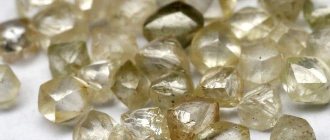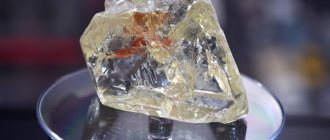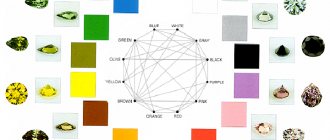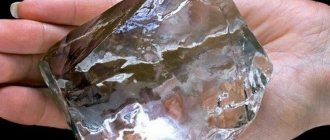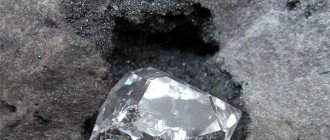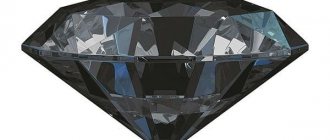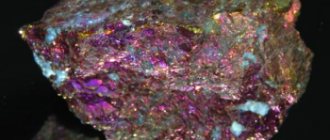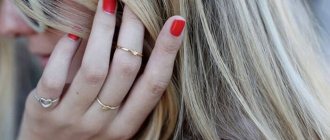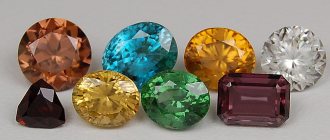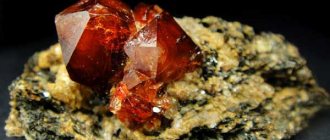507 carat Cullinan Heritage Diamond
Diamond
- the hardest mineral, a cubic polymorphic (allotropic) modification of carbon (C), stable at high pressure. At atmospheric pressure and room temperature it is metastable, but can exist indefinitely without turning into graphite, which is stable under these conditions. In a vacuum or in an inert gas at elevated temperatures, it gradually turns into graphite.
- Structure
- Properties
- Morphology
- Origin
- Application
- Classification
- Physical properties
- Optical properties
- Crystallographic properties
See also:
Diamond
- price and medicinal, magical properties
Physical properties and structure of agate
STRUCTURE
Crystal structure of diamond
Diamond system is cubic, space group Fd3m. The elementary cell of the diamond crystal lattice is a face-centered cube, in which carbon atoms are located in four sectors arranged in a checkerboard pattern. Otherwise, the diamond structure can be represented as two cubic face-centered lattices, offset relative to each other along the main diagonal of the cube by a quarter of its length. A structure similar to diamond is found in silicon, a low-temperature modification of tin and some other simple substances. Diamond crystals always contain various defects in the crystal structure (point, linear defects, inclusions, subgrain boundaries, etc.). Such defects largely determine the physical properties of crystals.
What is a diamond
Having a special structure, diamond is incredibly durable. The crystal lattice of the mineral has the shape of a cube, inside and on the tops of which carbon atoms are located. The presence of a strong bond between these atoms determines the structure of the gemstone: its hardness.
The chemical formula of diamond is extremely simple. It consists almost entirely of carbon. Therefore, the formula of diamond is C (carbon). The proportion of other elements in the composition of the mineral is insignificant (therefore, these elements are not taken into account in the formula). In general, carbon is quite small in nature (about 0.15% of the total number of elements).
The variety of applications of natural raw materials is due to the unique characteristics of the mineral. Common uses of gemstones include:
- in the manufacture of jewelry;
- in electronics: to avoid overheating of devices;
- in the manufacture of medical instruments.
The composition and physical properties of diamond also determine the use of the mineral in the field of telecommunications. Such raw materials are highly valued for their ability to withstand sudden changes in temperature and stress.
Note! The chemical composition of diamond also determines the use of natural raw materials in the mining industry: to increase the efficiency of the drill bit.
Only 15% of stones mined in the world are subsequently used to produce diamonds from natural raw materials. 45% of minerals are “conditionally suitable” for cutting minerals. The remaining raw materials are used for production and industrial needs.
PROPERTIES
Diamond in the Rough
Diamond can be colorless, water-transparent or colored in various shades of yellow, brown, red, blue, green, black, gray. The color distribution is often uneven, patchy or zonal. Under the influence of X-rays, cathode and ultraviolet rays, most diamonds begin to glow (luminesce) in blue, green, pink and other colors. Characterized by exceptionally high light refraction. The refractive index (from 2.417 to 2.421) and strong dispersion (0.0574) determine the bright shine and multi-colored “play” of cut jewelry diamonds, called brilliants. The shine is strong, from diamond to greasy. Density 3.5 g/cm3. On the Mohs scale, the relative hardness of diamond is 10, and the absolute hardness is 1000 times higher than the hardness of quartz and 150 times that of corundum. It is the highest among all natural and artificial materials. At the same time, it is quite fragile and breaks easily. The fracture is conchoidal. Does not interact with acids and alkalis in the absence of oxidizing agents. In air, diamond burns at 850° C with the formation of CO2; in a vacuum at temperatures above 1,500 ° C it turns into graphite.
What do the stones look like?
There is a classification of minerals, according to which they distinguish:
- diamond. Such stones are shining specimens, suitably processed in the workshop;
- board. This is the name given to irregular fine-grained specimens. Natural stone is painted black;
- ballas. The spherical gems have a grayish cloudy structure. Therefore, ballas are classified as translucent crystals.
It is worth telling what other minerals are present in nature. Carbonado is a multi-colored crystals, colored gray or black. Such natural raw materials have a coarse-grained or dense structure.
Yakutite is also distinguished. According to its characteristics, the stone is a dark mineral with small inclusions and a silvery sheen on the surface.
MORPHOLOGY
Diamond morphology is very diverse. It occurs both in the form of single crystals and in the form of polycrystalline intergrowths (“board”, “ballas”, “carbonado”). Diamonds from kimberlite deposits have only one common flat-faceted shape - the octahedron. At the same time, diamonds with characteristic curved shapes are common in all deposits - rhombic dodecahedroids (crystals similar to a rhombic dodecahedron, but with rounded edges), and cuboids (crystals with a curved shape). As experimental studies and the study of natural samples have shown, in most cases, dodecahedroid-shaped crystals arise as a result of the dissolution of diamonds by kimberlite melt. Cuboids are formed as a result of the specific fibrous growth of diamonds according to the normal growth mechanism.
Cullinan diamond broken into 9 parts
Synthetic crystals grown at high pressures and temperatures often have cube faces and this is one of their characteristic differences from natural crystals. When grown under metastable conditions, diamond easily crystallizes in the form of films and columnar aggregates. The sizes of the crystals vary from microscopic to very large, the mass of the largest diamond, “Cullinan”, found in 1905. in South Africa 3106 carats (0.621 kg). Several months were spent studying the huge diamond, and in 1908 it was split into 9 large pieces. Diamonds weighing more than 15 carats are rare, but diamonds weighing over a hundred carats are unique and are considered rarities. Such stones are very rare and often receive their own names, world fame and their special place in history.
Subtleties of care
Despite the special structure of the diamond, diamond jewelry should be protected from shock and mechanical impact. At home, jewelry is regularly washed in warm soapy water. Diamond jewelry is left in this solution for 20 minutes. After the specified time, the products are cleaned with a soft cloth. After this, the jewelry is washed in cool, clean water.
Diamonds are stored in tightly closed boxes and velvet bags. At the same time, precious stones should not scratch each other.
There are various ways to obtain gems. A set of jewelry with expensive diamonds indicates a woman’s wealth and high status in society. Female representatives should learn everything about diamond in terms of its magical properties. For example, a diamond ring promotes the active development of creative potential.
ORIGIN
Although diamond is metastable under normal conditions, due to the stability of its crystal structure, it can exist indefinitely without turning into a stable modification of carbon - graphite. Diamonds that are brought to the surface by kimberlites or lamproites crystallize in the mantle at a depth of 200 km. or more at a pressure of more than 4 GPa and a temperature of 1000 - 1300 ° C. In some deposits, deeper diamonds are also found, removed from the transition zone or from the lower mantle. Along with this, they are carried to the Earth's surface as a result of explosive processes accompanying the formation of kimberlite pipes, 15-20% of which contain diamond.
Diamonds are also found in ultra-high pressure metamorphic complexes. They are associated with eclogites and deeply metamorphosed garnet gneisses. Small diamonds have been found in significant quantities in meteorites. They have a very ancient, pre-solar origin. They also form in large astroblemes - giant meteorite craters, where melted rocks contain significant amounts of fine-crystalline diamond. A well-known deposit of this type is the Popigai astrobleme in northern Siberia.
Diamonds
Diamonds are a rare, but at the same time quite widespread mineral. Industrial diamond deposits are known on all continents except Antarctica. Several types of diamond deposits are known. For several thousand years, diamonds have been mined from alluvial deposits. It was only towards the end of the 19th century, when diamond-bearing kimberlite pipes were first discovered, that it became clear that diamonds do not form in river sediments. In addition, diamonds were found in crustal rocks in associations of ultra-high pressure metamorphism, for example in the Kokchetav massif in Kazakhstan.
Both impact and metamorphic diamonds sometimes form very large deposits, with large reserves and high concentrations. But in these types of deposits, the diamonds are so small that they have no industrial value. Commercial diamond deposits are associated with kimberlite and lamproite pipes associated with ancient cratons. The main deposits of this type are known in Africa, Russia, Australia and Canada.
APPLICATION
Good crystals are cut and used in jewelry. About 15% of mined diamonds are considered jewelry, another 45% are considered near-jewelry, that is, inferior to jewelry in size, color or clarity. Currently, global diamond production is about 130 million carats per year. Diamond
(from the French brillant - brilliant), is a diamond that has been given a special shape through mechanical processing (cutting), a brilliant cut, which maximizes the optical properties of the stone such as brilliance and color dispersion.
Very small diamonds and fragments, unsuitable for cutting, are used as an abrasive for the manufacture of diamond tools necessary for processing hard materials and cutting the diamonds themselves. The cryptocrystalline variety of diamond, black or dark gray in color, forming dense or porous aggregates, is called Carbonado
, has a higher abrasion resistance than diamond crystals and is therefore especially valued in industry.
Small crystals are also grown artificially in large quantities. Synthetic diamonds are obtained from various carbon-containing substances, mainly from graphite, in special. apparatuses at 1200-1600°C and pressures of 4.5-8.0 GPa in the presence of Fe, Co, Cr, Mn or their alloys. They are suitable for technical use only.
Diamond - C
| Molecular weight | 12.01 g/mol |
| origin of name | From Greek, adamas, meaning "invincible" or "solid". |
| IMA status | valid, first described before 1959 (before IMA) |
A little history
There are many legends and beliefs associated with this amazing stone. And one of them is that a diamond brings good luck to its owner. But only winners in life can own it. And famous people who wore it include Napoleon Bonaparte, Julius Caesar and Holy Roman Emperor Louis the Fourth.
Europe recognized the diamond around the 5th-6th century BC. e., but only 550 years ago it gained its incredible popularity. After all, it was then that they learned how to cut it correctly in order to maximize the properties of a diamond. And all because of its incredible property - enormous strength, while the density of diamond is 3500 kg/m3. What other known mineral can boast the same characteristics?
But the fact that many consider a diamond to be a mineral that cannot be broken has led to the loss of rare and beautiful stones. For example, in 1476, during the war between Duke Charles the Bold (one of the first owners of brilliant-cut diamonds) and King Louis XI, the king's mercenaries managed to break into a tent standing on the battlefield. They were amazed by the placers of diamonds located there. They decided to check the authenticity of the stones with a hammer, and a large number of expensive and beautiful stones were turned into dust.
Diamonds became “friends of girls” only in the middle of the fifteenth century, thanks to Agnes Sorel, the favorite of Charles the Seventh. Now you know the name of the one who made many men “unhappy.”
PHYSICAL PROPERTIES
| Mineral color | colorless, yellowish-brown fading to yellow, brown, black, blue, green or red, pink, cognac brown, blue, lilac (very rare) |
| Stroke color | no |
| Transparency | transparent, translucent, opaque |
| Shine | diamond, bold |
| Cleavage | octahedron perfect |
| Hardness (Mohs scale) | 10 |
| Kink | uneven |
| Strength | fragile |
| Density (measured) | 3.5 – 3.53 g/cm3 |
| Radioactivity (GRapi) | 0 |
| Thermal properties | High thermal conductivity. It feels cold to the touch, which is why diamonds are called “ice” in slang. |
What else does the cost depend on?
The price range for diamonds is very wide, and the cost depends on many characteristics. But in any case, the price is always indicated per carat (0.2 g):
- Cut: The most highly rated of these is the 57 facet cut, or is also called the Tolkowsky cut. For small diamonds - 17 and 33. The remaining cuts are considered fancy, and their price is much lower. But still, we list other types of cuts: “Baryon”, “Quadrillion”, “Princess”, “Marquise”, “Rose”, “Briolet”, “Pear”, “Oval”, “Heart”, “Asscher”, “Emerald” ", "Radiant", "Triliant".
- Transparency: if the transparency of a diamond is ideal, there are no cracks, including microinclusions, then the price instantly increases by an order of magnitude, or even more.
- Stone size: here we are not talking about carats, so a diamond weighing one carat in diameter can be 6.5 mm, and if other indicators are as high, then the cost can be 10-12 thousand dollars per carat.
- Color. It all depends on fashion trends and the whims of the client. But the most valuable are still considered colorless and with a bluish tint.
OPTICAL PROPERTIES
| Type | isotropic |
| Refractive indices | nα = 2.418 |
| Maximum birefringence | δ = 2.418 - isotropic, does not have birefringence |
| Optical relief | moderate |
| Optical axis dispersion | strong |
| Pleochroism | does not pleochroate |
| Luminescence in ultraviolet radiation | sometimes blue or phosphorescent |
